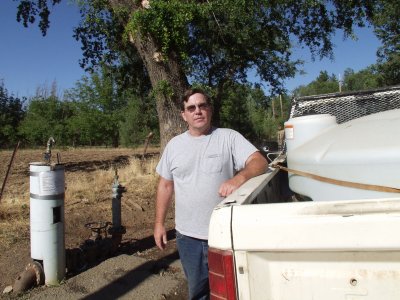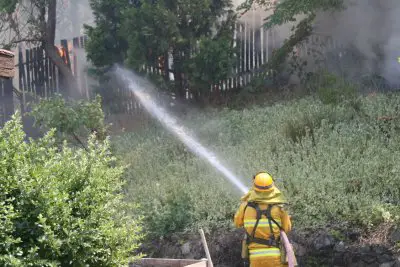LAKEPORT – After five years, numerous trial reschedulings, one trial that ended in a hung jury and another that stretched over the past nine weeks, it took a jury just an hour and a half to convict a Clearlake man of a 2002 murder.
The jury in the trial of Edward James Munoz, 26, accused of the 2002 murder of Leah Leister, came back with a guilty verdict at 3 p.m. Wednesday, reported Chief Deputy District Attorney Richard Hinchcliff.
Munoz was accused of the March 11, 2002 murder of the 26-year-old Leister, a single mother whose body was found in her Clearlake apartment.
Munoz pleaded not guilty to the crime, as Lake County News previously reported.
Hinchcliff said Munoz stabbed Leister 16 times, cutting her throat several times as well. “When he finished that, he duct-taped her hands together and her feet together,” said Hinchcliff, who has been with the case since its beginning five years ago.
Hinchcliff said Munoz initially told investigators that he was ordered to kill Leister by Nortenos gang leaders out of Pelican Bay State Prison because she was stealing drugs from the gang.
But at trial, Munoz changed that story and claimed he was lying initially, said Hinchcliff.
Speaking of the trial, Hinchcliff said, “It was a frustrating, long, tiresome ordeal.”
The same can be said of the entire process that led to this point.
Munoz has been in custody in the Lake County Jail since April 2002. Hinchcliff said there were numerous changes of attorneys, either at Munoz's request or when attorneys chose to leave the case. The result was that his trial was rescheduled 13 times before it finally started in Judge Arthur Mann's courtroom last fall.
George Boisseau, a private criminal defense attorney from Santa Rosa, came to defend Munoz, and was the man at his side during last year's trial, which ended on Oct. 11 in a hung jury, 11-1, over the issue of Munoz's guilt.
Boisseau was again at the defense table for the retrial, which Hinchcliff said started jury selection on April 24 and began two weeks later. During the past nine weeks, Hinchcliff estimated he called about 20 witnesses to the stand, some testifying for as few as 15 minutes, some for a day or longer.
This time, the jury came back in short order with a conviction, finding Munoz guilty of first degree murder with a special gang allegation. “The jury was firmly convinced of his guilt,” Hinchcliff said.
Munoz's sentencing is scheduled for Aug. 27, although Hinchcliff said it's a date that likely will be changed.
“There's a good chance that it's going to take probably about four months to get him sentenced just because of motions the defense is likely to file and we'll have to respond to,” said Hinchcliff.
Among those, Hinchcliff expects Boisseau will file a motion for a new trial.
Munoz, however, is not facing the death sentence, said Hinchclif, who explained that the District Attorney's Office is instead seeking life without the possibility of parole.
Death penalty cases, said Hinchcliff, must meet certain statutory guidelines, including multiple homicides or the murder of a peace officer, and a defendant's extensive prior criminal record. “It was our opinion that this case didn't satisfy the factors, so we were not seeking the death penalty.”
Going through the retrial process, Hinchcliff said, “My main concern was for the victim's family and her mother, and how frustrating it was for her.”
Leister's family wanted closure and for Munoz to be held accountable for the crime. “Finally, that's done for them.”
Next, the family must decide if they'll give victim impact statements at Munoz's sentencing, said Hinchcliff.
Munoz's conviction brings with it another tragic backstory. His older brother, Richard Munoz, is currently serving a 25-years-to life sentence for a murder that took place in the late 1990s. Retired Clearlake Police Captain Ron Larsen said Richard Munoz, while still a juvenile, cut the throat of a 14-year-old boy at Clearlake Commons Apartments.
This isn't the first case that Hinchcliff has seen to a conclusion after years of delays and investigation. Last summer, he won a murder conviction in the case of Paul James Smiraglia, 47, who was found guilty of murdering 43-year-old Diedre Coleman in July 2002. The jury in that trial, which lasted about a month, also returned a verdict quickly, deliberating only two hours.
Hinchcliff said he has some other homicide cases to prepare for, and will next go to trial in a home invasion burglary case Sept. 5.
E-mail Elizabeth Larson at This email address is being protected from spambots. You need JavaScript enabled to view it..
{mos_sb_discuss:2}












